
STREAMLINED IDENTIFICATION AND CHARACTERIZATION OF VIRAL STRAINS
DOWNLOAD THIS GUIDEHome > Product Literature > Software Challenges in Virus Identification | DNASTAR
Chapter 2: Software Challenges Faced When Identifying Viral Strains
What software challenges do virologists face when identifying viral strains?
DNASTAR recently conducted a survey of virologists about the challenges researchers face in analyzing viral genomes. Though a common concern was finding good quality template sequences with up- to-date annotations, inadequate or hard-to-use software was cited as the most significant hurdle to obtaining characterized viral genomes. Our respondents reported that the software they had tried:
- Was command-line based and difficult to learn
- Couldn’t automatically remove host DNA prior to assembly
- Didn’t integrate with existing pipelines or work with multiple types of read technology (e.g., Sanger, Illumina, Nanopore)

- Required manual data manipulation
- Didn’t offer useful guidance on setting up or analyzing the project
- Didn’t allow them to visualize variants once the samples were assembled against a template
- Didn’t support automated batch extraction of the sequence portion of interest (e.g., the part of viral samples known to affect potential vaccine efficiency) and multiple alignment of only that portion of the sequence
- Couldn’t align viral genomes over 200kb in length
- Couldn’t calculate mutation rates
To download this entire ebook as a PDF, click here.
How does Lasergene software address these challenges?
Lasergene software eliminates many of the common challenges faced by researchers identifying viral strains by offering tools that are easy to use, automated, and accurate.
1. Lasergene has an intuitive interface and is easy to learn
All Lasergene applications involved in the viral analysis workflow feature easy project setup with intuitive graphic interfaces and wizards. For instance, the SeqMan NGen assembly application guides you step-by-step through choosing a workflow and uploading your read sequence and reference files. Yellow highlighting (Figure 4) shows you exactly where your input is needed.
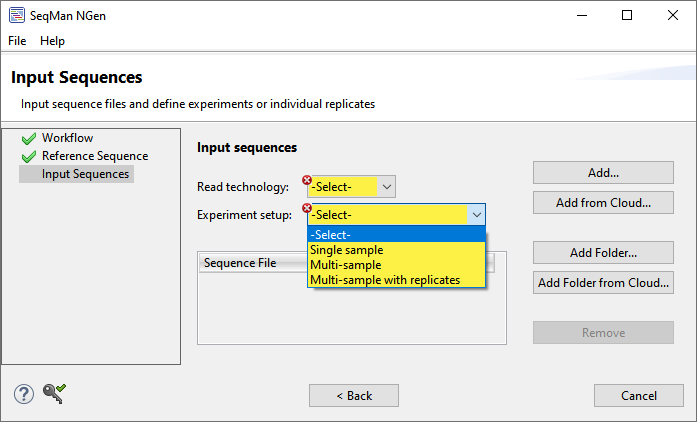
Figure 4. SeqMan NGen’s “Input Sequences” screen prompts you to specify the read technology and experiment setup.
2. Lasergene can automatically remove host DNA prior to assembly
SeqMan NGen’s templated assembly set-up wizard lets you check a box and add one vector file or a whole folder of them (Figure 5). De novo assembly workflows allow you to specify automatic removal of common adapters, specific vectors, poor quality data, contaminants and/or repeats prior to assembly.
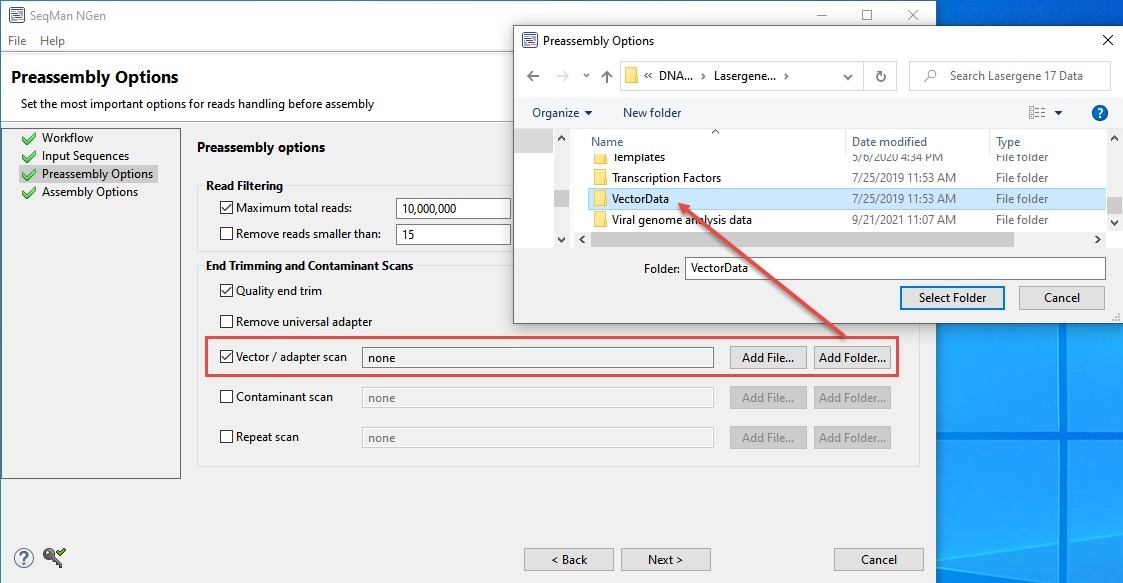
Figure 5. Specifying vector sequence removal in SeqMan NGen.
3. Lasergene integrates with existing pipelines and works with multiple types of read technology (e.g., Sanger, Illumina, Nanopore)
All Lasergene applications can open and export most commonly-used sequence formats.
Lasergene’s viral genome analysis workflow supports assembly of Sanger, Illumina, Ion Torrent, PacBio and Nanopore reads. In fact, SeqMan NGen can import and assemble sequence reads with any of two dozen file extensions ranging from .abi to .zip.
If you are starting with draft genomes, MegAlign Pro can import and multiply-align or pairwise-align draft genome sequences with any of nearly three dozen different file extensions (Figure 6). The application can also export a wide range of alignment and tree file formats, meaning it integrates easily with other phylogenetic analysis programs.
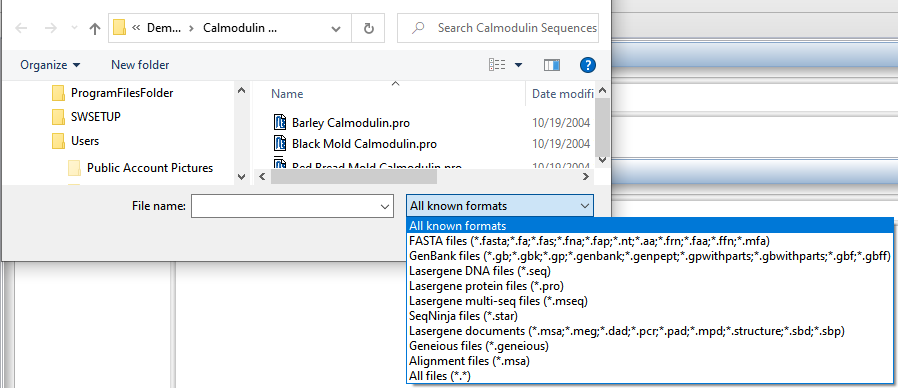
Figure 6. When adding sequences or draft genomes to MegAlign Pro for pairwise or multiple sequence alignment, numerous file formats can be uploaded.
4. Lasergene does not require manual data manipulation
Because it can recognize and use so many file types, Lasergene’s viral analysis workflow does not require manual data manipulation or file reformatting.
On the other hand, several Lasergene applications in the viral analysis workflow do support editing when you want to edit.
- SeqMan Ultra can automatically remove of poor-quality Sanger reads prior to assembly and allows you to manually edit contigs after assembly.
- MegAlign Pro supports semi-automated end trimming prior to multiple sequence alignment.
- SeqMan Ultra and MegAlign Pro both let you export editable images to Microsoft PowerPoint.
5. After assembling reads against a template, Lasergene lets you easily visualize variants
Lasergene applications work together to create a seamless workflow. For example, once SeqMan NGen finishes assembling raw data reads, you simply click a button to begin variant analysis in SeqMan Ultra (Figure 7) and/or multi-sample comparison in ArrayStar.
Each application lets you specify what information you’d like to see in tables and which colors, fonts and other styles should be used in graphical displays. You can even display SNPs with specific color coding that can help you focus on variants of interest.
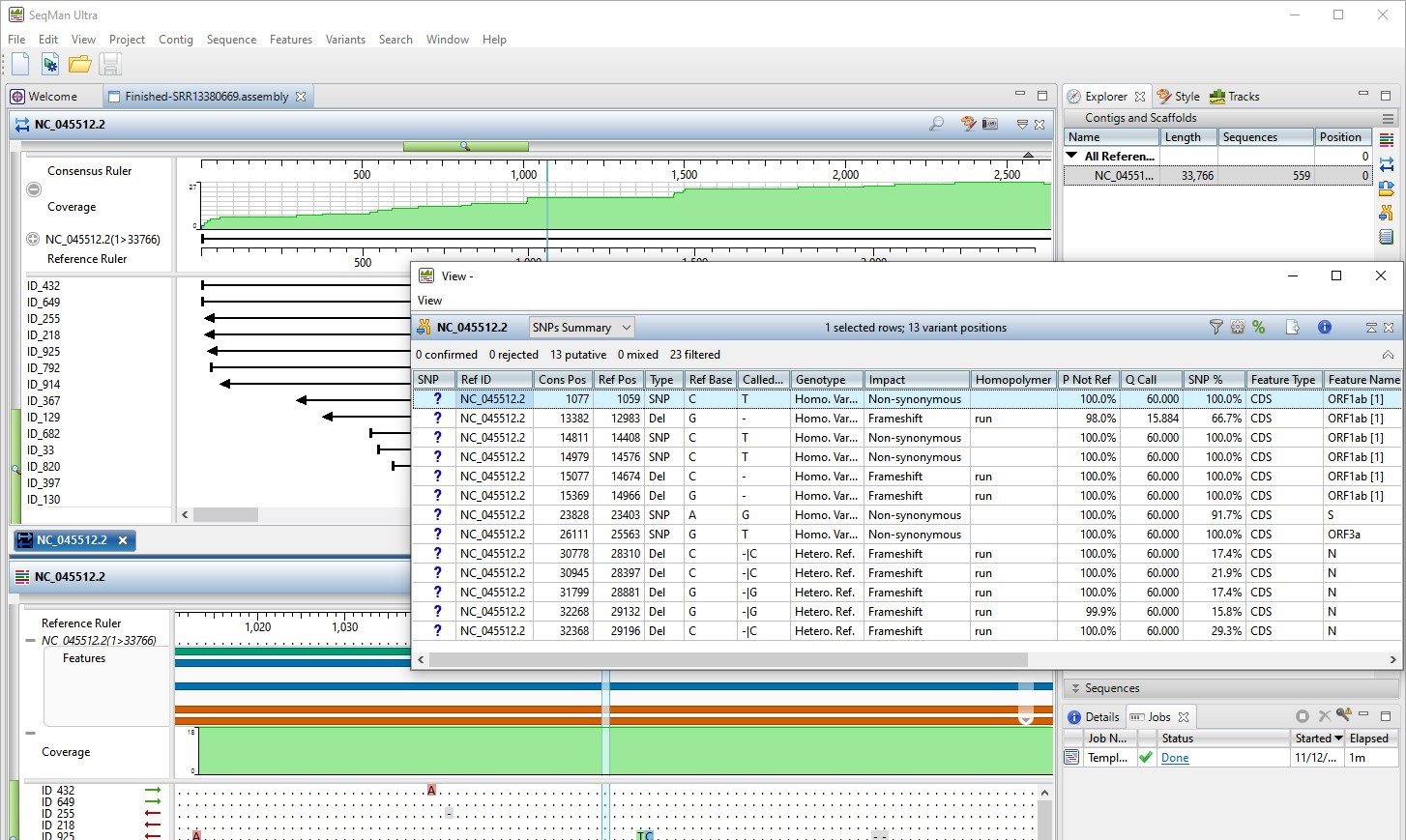
Figure 7. Viral genome data set displayed in SeqMan Ultra. The table in the middle of the image shows variants that met specific criteria. The lower portion of the image shows the location of all variants, which have been automatically color-coded according to their chemistry.
6. Lasergene offers useful guidance about how to set up and analyze the project
All Lasergene applications involved in the viral genome workflow start with a screen designed to effortlessly get you started.
Within the application, you can access the User Guide at any time by choosing the first command in the Help menu. Each User Guide has comprehensive information about every screen, view and workflow in the application, as well as how-to videos and step-by-step tutorials with downloadable data.
Don’t want to search for the User Guide topic you need? Many application screens, views, dialogs and popups have a blue “info” button that takes you straight to the relevant page of the User Guide. You can also hover over tools, table cells and other parts of the application window for helpful tool tips (Figure 8).
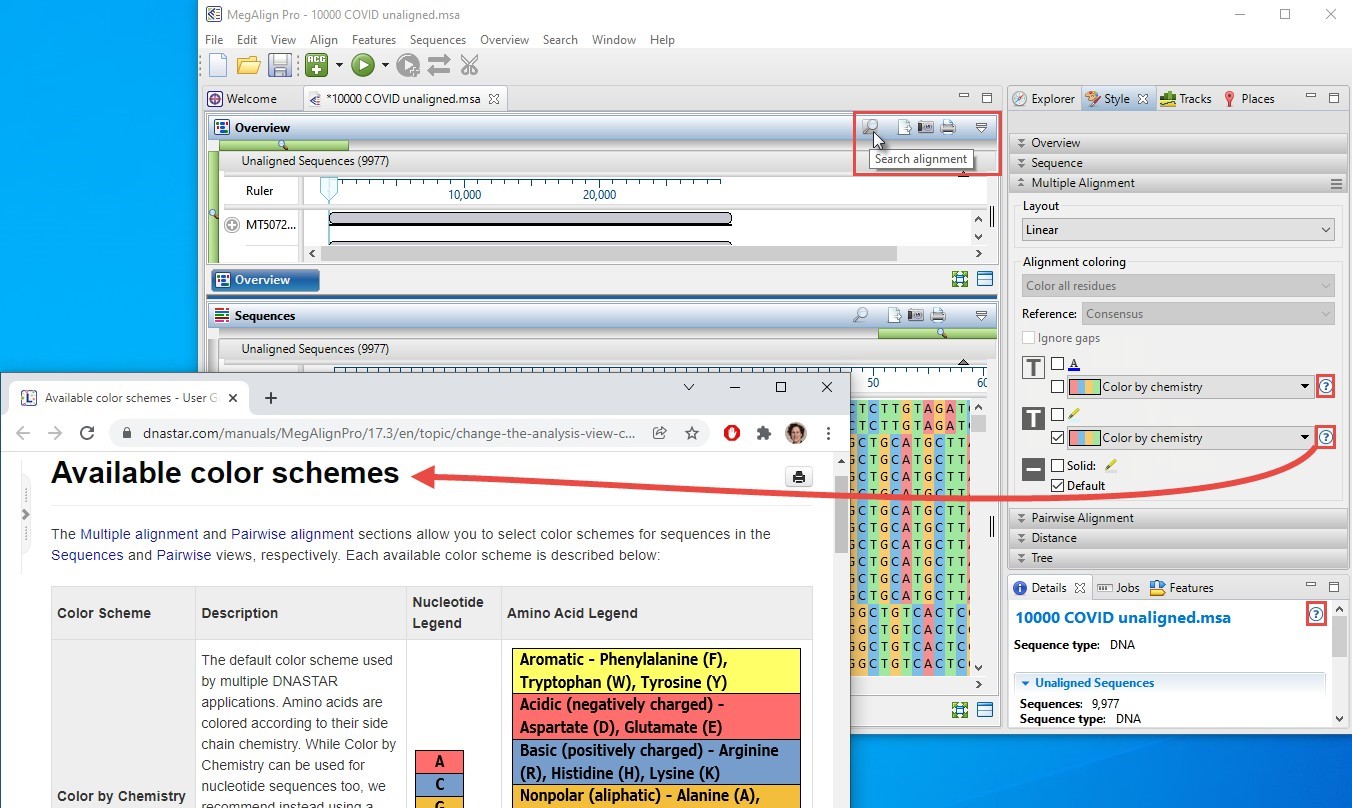
Figure 8. The MegAlign Pro window showing a tooltip (boxed), three info buttons and the user guide page accessed by clicking one of those buttons.
Need personalized help? Licensed Lasergene users can get live support by email, phone, or a one-on-one online training session.
7. Lasergene can batch-extract and align only the important parts of viral sequences
With Lasergene, you can automatically select a portion of each sequence in the project (Figure 9) and align just the selected portions of the sequences.

Figure 9. Selecting the portion of sequence corresponding to the Adh gene using MegAlign Pro.
8. Lasergene can align viral genomes over 200kb in length
Lasergene supports multiple alignment with the MAFFT v.7 algorithm, which can align approximately twenty sequences of one million bp in length. As sequences get shorter, MAFFT supports aligning more of them. For instance, by selecting the MAFFT algorithm within MegAlign Pro, we have successfully aligned 10,000 SARS CoV-2 genomes (30kb) in just two minutes.
9. Lasergene can calculate mutation rates
Lasergene provides an easy way to measure the mutation rate of a viral strain. Collect samples over time (e.g., SARS-CoV-2 strains from various stages of the pandemic) and use the MegAlign Pro application to perform a multiple sequence alignment. In the Distance table, specify that Distance values be displayed. These values can be used to calculate the rate of mutation.

